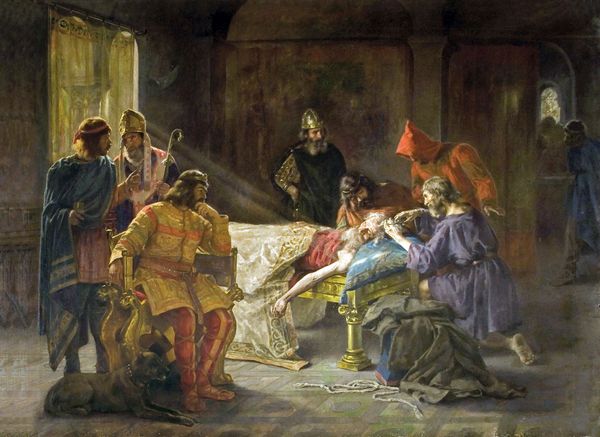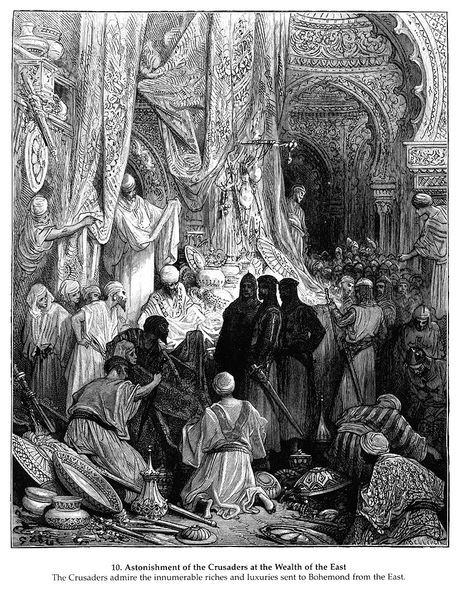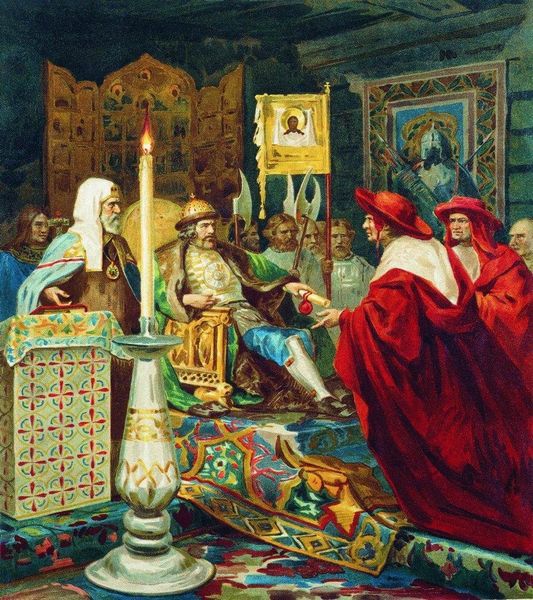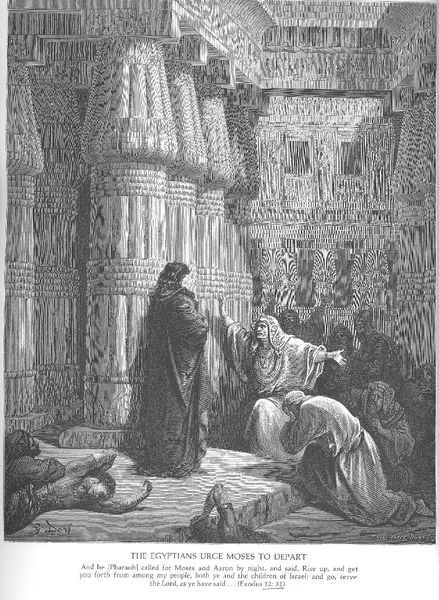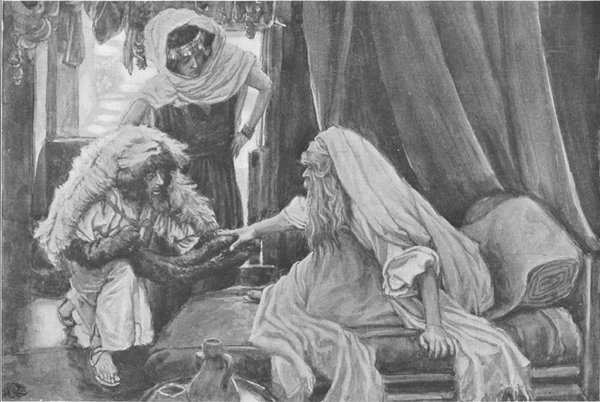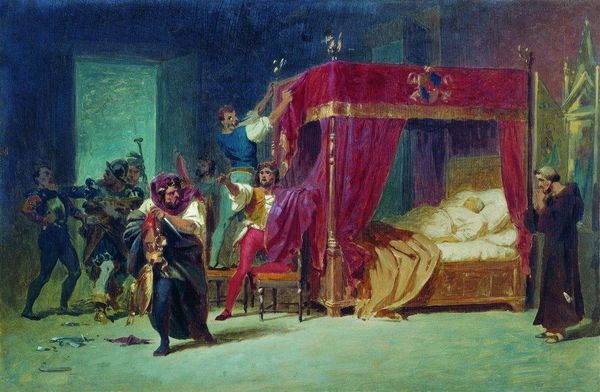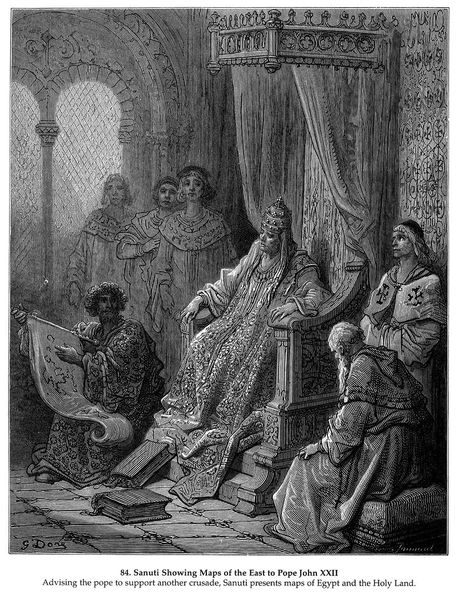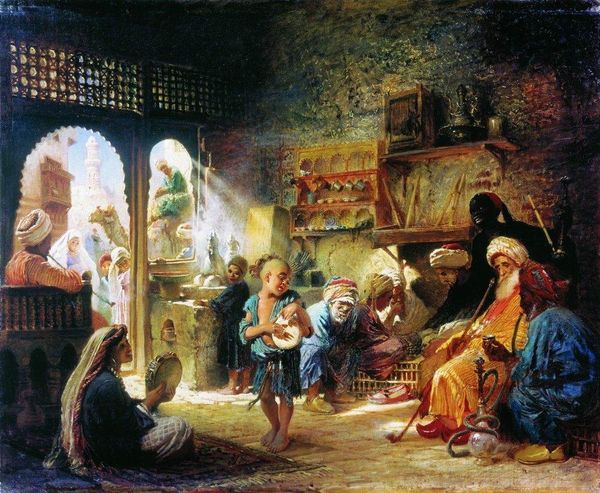
painting, oil-paint
#
portrait
#
medieval
#
narrative-art
#
painting
#
death
#
oil-paint
#
oil painting
#
famous-people
#
romanticism
#
russian-avant-garde
#
genre-painting
#
history-painting
#
academic-art
Copyright: Public domain
Curator: I find the composition quite moving. The somber atmosphere is thick with grief and reverence. It truly encapsulates loss, don’t you think? Editor: Indeed. We're looking at Henryk Siemiradzki’s "The Death of Alexander Nevsky," a history painting rendered in oil. It belongs, somewhat awkwardly, to both the Romanticism and Russian Avant-Garde movements and the Academic Art style. It really begs the question of how socio-political influences were perceived and interpreted. Curator: Yes! Especially in relation to the representation of Alexander Nevsky as a symbol. How much does the painting celebrate a figure versus utilize him as a tool? It feels rooted in constructing narratives around Russian identity. How does the construction impact national identity, especially through the lens of death and mourning? Editor: Exactly. Siemiradzki clearly depicts a powerful, symbolic moment. The artist likely considered the political and public perception of figures like Nevsky to contribute a kind of legitimization. Did this idealized image serve a larger national narrative and bolster certain powers or factions within society? Curator: Absolutely. I find myself questioning the depiction of these grieving figures surrounding him too. Their presence – or even lack thereof – speaks to gendered roles and societal expectations. How did class impact visibility, or lack thereof, in this moment of national mourning? Editor: An astute observation. What purpose did the visual construction of a historical death scene serve for contemporary audiences? Perhaps, constructing a unifying symbol during times of social division and political transition. It's hard to separate the symbolic death of a "hero" from those larger socio-political and national contexts. Curator: Reflecting on this piece, I am drawn to consider who really has agency and who benefits in the production of collective memory through art like this? Whose story gets privileged? Editor: Right, because analyzing art isn’t just about the individual genius of the artist, but considering how the socio-political forces contextualize, shape, and allow a piece like this to find its viewers. It reveals the public's relationship to both art and the power dynamics of the era.
Comments
No comments
Be the first to comment and join the conversation on the ultimate creative platform.
